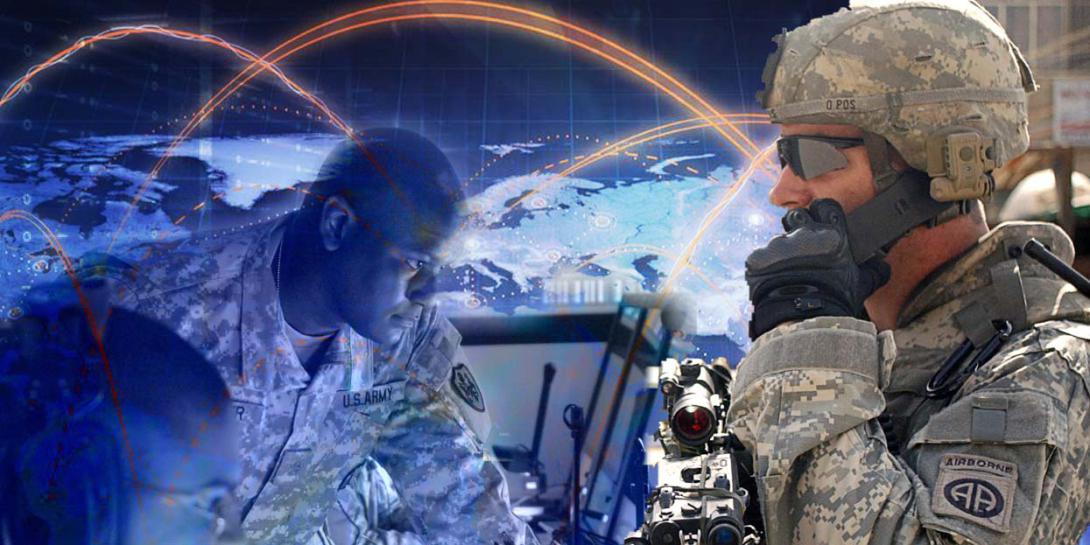Walking the Perimeter of the Home Station Tech Refresh
The Home Station Mission Command Center technology refresh, generally called the HSMCC tech refresh, is part of my portfolio for the modernization of command centers under the U.S. Department of the Army’s Installation Information Infrastructure Modernization Program. In fiscal year 2017, the Army performed an HSMCC tech refresh on four command centers to establish an interim technical baseline while the service finalizes the system requirements, standardizing the disparate, off-the-shelf technology at the division and corps headquarters.
As assistant product manager for command centers, I along with my team manage the HSMCC tech refreshes at the first four sites: the 4th Infantry Division at Fort Carson, Colorado; the 25th Infantry Division at Schofield Barracks, Hawaii; the 1st Infantry Division at Fort Riley, Kansas; and the 3rd Infantry Division at Fort Stewart, Georgia.
We completed all four of these sites in 2017, delivering a suite of sustained and standardized technical capabilities, components to operate multiple networks, enhanced audio-visual capabilities and the physical infrastructure necessary to establish uninterrupted expeditionary mission command through all phases of operations.
These HSMCC tech refreshes deliver a common equipment baseline through a deliberate and disciplined modernization method that provides a complete, integrated package of networking equipment and functional software to combat formations, from HSMCC to the dismounted soldier. Readiness is our number one priority, and this tech refresh ensures that the Army network is soldier-ready, anytime and anywhere.
As the Army expands the capacity of the entire global network, the need for speed in delivering this IT solution to the fighting edge is critical. Thanks to the unit leadership, the I3MP team, and our industry partners, soldiers have the mission-critical IT solutions that enable commanders and their staffs to accomplish the mission in the multi-domain battle.
The HSMCC tech refreshes will help our force to quickly adapt to new requirements and changes in the global security environment. Our future Army will operate in a complex world where cloud-based computers will receive data from billions of connected devices in the Internet of Things. These computers will have the capacity to digest, correlate, contextualize, process and present data back to humans in a way that assists our decision-making process.
Mission Command is more than a buzzword. In today's complex, fast-moving battlefield, there is a demonstrable requirement for Army leaders to implement mission command, empowering agile and adaptive leaders on the ground. Command and control applications and software, innovative communications systems and advanced manufacturing offer the warfighter new dimensions of survivability and lethality. Autonomous control of routine, time-consuming tasks could free up commanders to concentrate on more challenging decisions.
To prepare for future wars, the Army network is adapting to meet the business and expeditionary mission command needs of the joint force commanders across the full range of military operations in a joint, interorganizational, multinational partner environment.
This tech refresh balances the rapid delivery of capabilities with cost, changing the battlefield calculus by increasing a commander’s situational awareness and simplifying the mission command capability, allowing greater flexibility in the execution of the warfighting functions.
An HSMCC will support a force that is agile, expeditionary, tailorable and prepared to meet the challenges of the global environment, where battles are ultimately won on the ground. These upgraded division command centers now nest within the mission command network, where divisions, corps and select theater commands will require the increased flexibility provided by the reach-back and reach-forward expeditionary mission command.
To support HSMCC operations, the Army will upgrade installation network infrastructure to ensure reliable access to the Department of Defense Information Network (DoDIN). With 100 gigabits per second (Gbps) speeds between installations and 10 Gbps local speeds, installations will have the bandwidth to accommodate the necessary emerging applications and services offered by the DOD-approved enterprise hosting facilities.
With these network infrastructure upgrades, the Army will be positioned to adopt the Data Center/Cloud/Generating Force (DC/C/GF) Computing Environment, cloud-based enterprise business systems and unified capabilities. It will also set the foundation for full integration with the Joint Information Environment construct, to include the flexibility to scale throughput up or down based on network demand and available resources.
The Army will then focus on the development of a distributed mission command capability, instantiation of the DC/C/GF Computing Environment, integration of voice over Internet protocol (VoIP) and Secure VoIP, Joint Information Environment synchronization and network operations integration. By leveraging modernized installation infrastructure, the Army will not have to field additional sets of hardware to enable an HSMCC, building readiness into the network.
Major Aleyzer Mora is a U.S. Army acquisition officer and has served as the I3MP assistant product manager for command centers, based at Fort Belvoir, Virginia, since July 2015. Major Mora holds an MS in acquisition and contracting from the Florida Institute of Technology, an MBA from Touro University and a BS in business administration from Methodist University. The views expressed here are his alone.





Comments